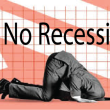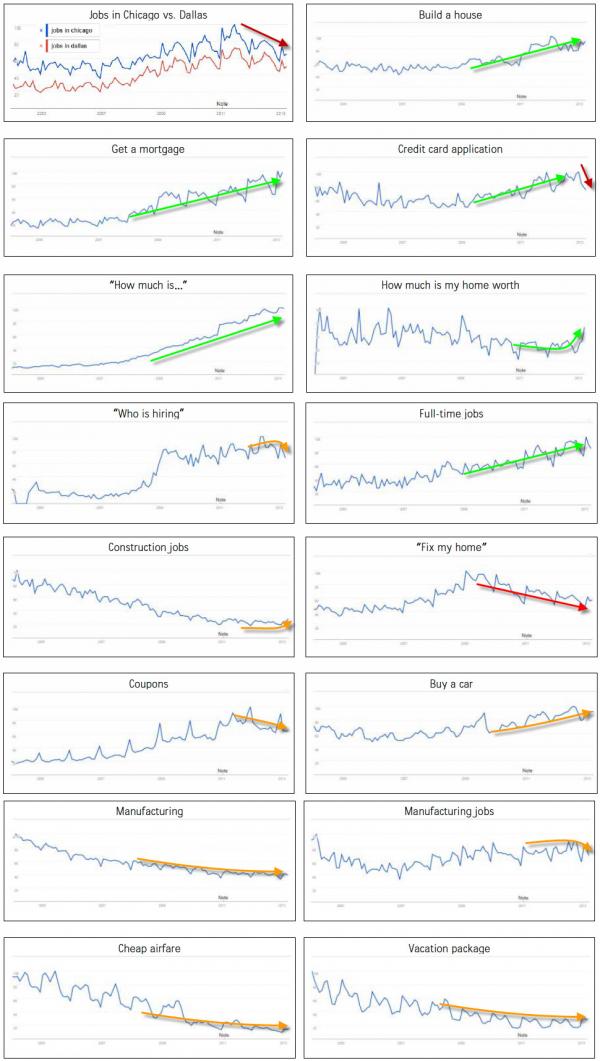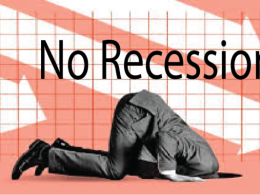Via ConvergEx's Nic Colas, Taylor Swift, Screaming Goats, and the Beige Book:
There’s a growing trend in online music and video to engineer “Mashups” of popular songs. Take two or more songs – the more varied the better – and merge them into one. Like everything else on the Internet, these efforts are hit or miss. However, the best are very, very good. A few samples:
- Taylor Swift’s “I Knew You Were Trouble” merged with oddly human sounding goats in the refrains. Their plaintive notes add some real angst to the tune, I must say. But they’re goats, so it is all a bit strange. One of the most popular video mashups of this theme has gotten over 2.6 million hits on youtube. See here: http://www.youtube.com/watch?v=HLI4EuDckgM.
- Take something like 39 popular songs, clip tiny slices out of them, and code them into a soundboard you can play like a keyboard. Create a new song without ever picking up an instrument. The video is a live performance and is pretty hypnotic: http://www.youtube.com/watch?v=lTx3G6h2xyA.
- Carly Rae Jepsen’s annoyingly ubitiquitous “Call Me Maybe” and Nine Inch Nail’s “Head Like a Hole.” It’s Trent Reznor’s voice and lyrics right over the fake string section from last summer’s breakthrough hit. As the following article and sample points out, NIN is touring this summer. This has surprise appearance by Carly Rae written all over it. Click here, and look for the tour stop nearest you: http://gawker.com/5988510/this-mash-up-of-nine-inch-nails-head-like-a-ho....
- Take a Cypress Hill backbeat, add John Lennon doing “Come Together” with Joan Jett and the Blackhearts’ riff from “I Love Rock n Roll.” All synced into a full song-length video. See here: http://www.youtube.com/watch?v=MZBuYbKgvQI.
At this point, it would be pretty easy to make a comparison between these Frankenstein-style collections and the state of capital markets. The Fed’s familiar backbeat of monetary stimulus – maybe a Tupac riff – layered into the equity market with Queen’s “We are the Champions.” Or Bowie’s “Young Americans” merged with The Who’s “My Generation,” wrapping in the “Hope I die before I get old” lyric to talk about entitlement spending and the recent sequester. Another day, perhaps…
Today’s mashup is a comparison of the Federal Reserve Beige Book, released yesterday, and the Google Trends online dataset. I’ll assume everyone knows the basic outlines of the Beige Book – Fed districts collect a range of anecdotal information about the economy and summarize it for the public. The Google Trends data is simply a count of the number of times a given search has been punched into that open box on www.google.com. You can slice and dice the data by timeframe, where the search was geographically initiated, and compare different queries for relative popularity. If you want a music mashup comparison, this might be Artie Shaw merged with Daft Punk, courtesy of DJ Tiesto. Old school meets techno…
Here are a few areas where Google Trends data can serve to either support or refute the Beige Book observations about the state of the U.S. economy.
Auto sales lead the Fed’s summary of consumer spending, and the tenor here is certainly strong. The Beige Book notes “Strong or solid” demand in most Districts. As we noted in yesterday’s note, however, dealer inventories are starting to pile up. Is demand as great as the Fed says?
The Google Trends data for the search “Buy a car” is trending higher, about 30% better than the 2007 trough. At the same time, demand is not at all-time levels – those occurred in September/October last year. Now, it could be that seasonality is at play here – Q4 is not a great time for car sales, with the exception of all those year-end specials. Bottom line – the trend here looks like the Fed has it right.
“Tourism strengthened in a number of Districts,” so says the Fed. That’s odd – just consider how poor consumer spending has been in the wake of the 2% point increase in withholding for Social Security.
Google Trends has the answer: searches for “Vacation package” and “Cheap airfare” have bounced very modestly, but off of very low levels. According to the indexed volume which Google displays (and you can see for all these topics in the graphs after this note), search volume for these phrases is currently a “20” reading. In 2004, it was 100. Bottom line: dead cat bounce here, although the notice about the good attendance at the American Birkebeiner cross country ski race in northwestern Wisconsin (Ninth District – MN notes) is a nice shout-out.
On prices, the Fed noted that ‘Pressures remained modest.” In addition, the Beige Book authors noted that “Plans to increase selling prices were limited among District contacts.
This is a major bone of contention, as it does feel like inflation is gaining steam. To test that theory, we checked on the Google traffic for the word “Coupon.” This search and its frequency should be an excellent indicator for both consumer financial stress and concerns over higher prices. As the accompanying chart shows, searches for coupons are in fact about 3x where they were pre-crisis, but 40% below where they were at the peak. In any case, the current levels seem to show that the Fed is right – overall, consumers aren’t (yet) worried enough about inflation to seek out coupon deals.
Finally, let’s turn to residential housing, the hoped-for star of the 2013 U.S. economy. The Beige Book is replete with anecdotes about multiple offer situations for houses listed for sale and generally good feelings all around.
The Google Trends data largely concurs. The phrase “How much is my house worth?” is back to 2009 levels. Hopefully this time the trend that users see will be positive. “Build a house” search volumes are also up 50% from the bottom. “Get a mortgage” is up over 100% from its lows a few years ago, even though seasonally it should be pretty weak right now.
Overall, I have to say that this mashup works reasonably well. The Fed’s song is very similar to the tune from the Google Trends data. Both are upbeat, peppy tunes and work as a tandem. And whether you are bullish or bearish, this shouldn’t surprise you. The question is not whether the Fed could engineer this nascent recovery. The question is “Can it last?” For that, we’ll need some new songs. And some fresh data in the coming months.












